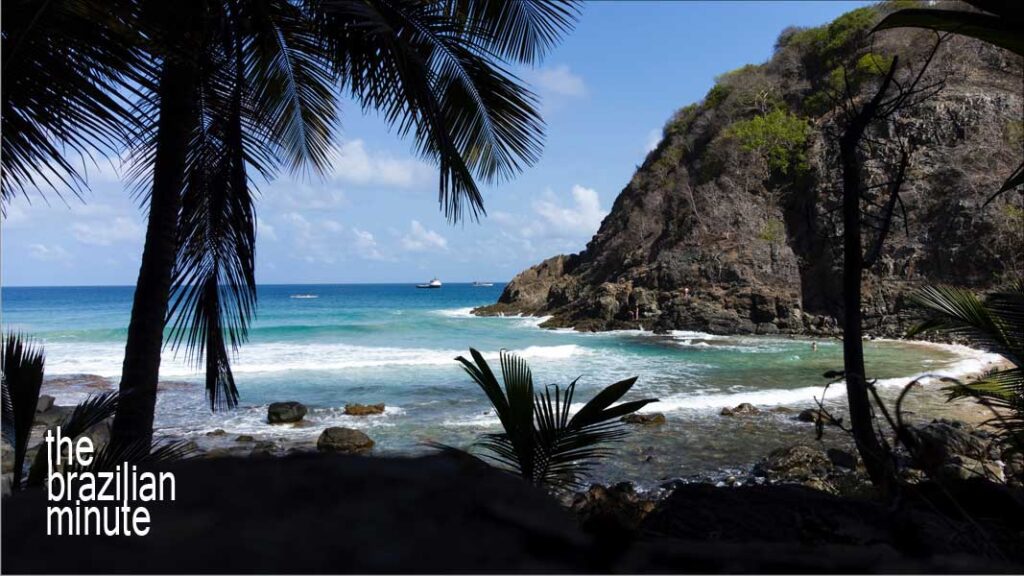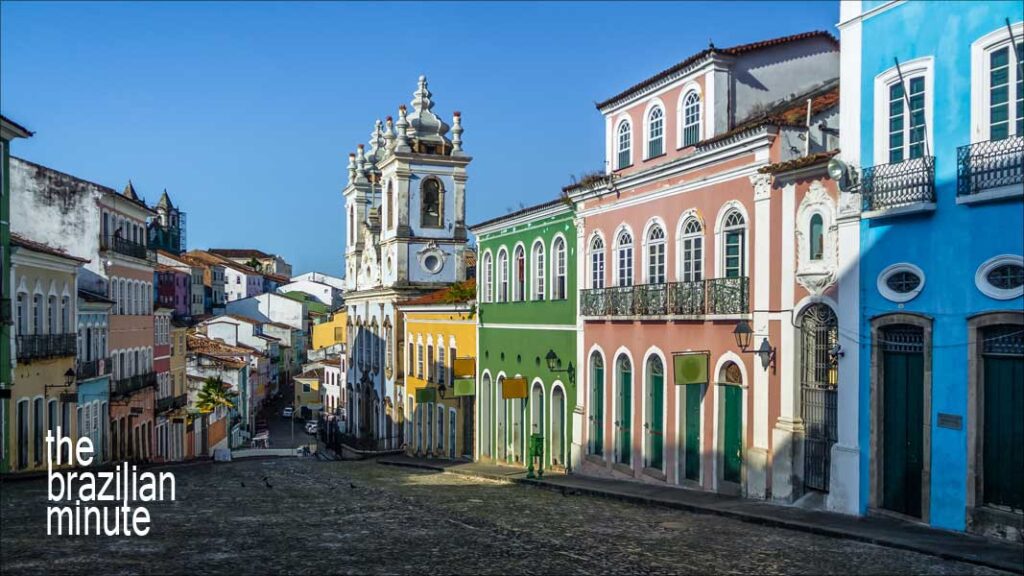
Cultural heritage is an exciting way to understand a nation’s Living history
Experience Brazil’s World Heritage sites. Here are five supremely interesting destinations for your Brazilian bucket list.
This series was presented by the Consulate-General of Brazil in Chicago and the Brazilian Foreign Ministry’s Cultural Department.
In celebration of Brazil’s Bicentennial year, 1822 – 2022
This week’s Brazilian Minute: Experience Brazil’s World Heritage Sites
(Audio not available)
Catch up with other Brazilian Minute episodes you may have missed!
Script from Audio:
Cultural heritage is a unique way to understand a nation’s history, especially for Brazil during its bicentennial year. So, let’s explore UNESCO’s list of Brazil’s World Heritage sites.
The historic town of Ouro Preto became Brazil’s first World Heritage site in 1980 while the former home and gardens of famed landscape artist Roberto Burle Marx is the most recent, in 2021.
In between, you’ll find numerous cultural and natural Heritage sites, nationwide. Twenty-three in all. These include the Historic Centers of Salvador da Bahia and Sao Luis. The colonial town of Olinda, plus Brazil’s capital city of Brasilia.
Natural sites include the Central Amazon Conservation Complex, Brazil’s Atlantic Islands, the Pantanal, The Iguacu Falls National Park, and Brazil’s Discovery Coast.
Read and listen to new weekly episodes of The Brazilian Minute.
Experience Brazil’s World Heritage Sites
Overview:
Appreciating a nation’s heritage is a particularly fascinating way to understand both its past and present. Brazil is a perfect example when it comes to the many aspects of culture, nature, and the histories of its people.
From 1980 until today, Brazil has worked closely with UNESCO through the 1977 Convention on World Cultural and Natural Heritage.
Currently, UNESCO has identified 22 World Heritage sites as defined by their “exceptional and universal value to the culture of humanity.”
Of these, 14 of Brazil’s World Heritage sites are designated as cultural, seven sites as natural, and one site as mixed. You’ll find the complete list of Brazil’s World Heritage sites below.
Interestingly, here are five Brazilian World Heritage sites that you should add to your next visit.
Olinda’s Colonial Historic District

The colonial town of Olinda is one of Brazil’s timeless treasures. It’s located on the Atlantic coast next to Recife in the northeastern state of Pernambuco.
Founded in 1535, Olinda is rated among Brazil’s best-preserved colonial sites. First and foremost is Olinda’s vibrant mix of history, architecture, and living culture. Olinda’s authenticity reflects its UNESCO World Heritage certification, which happened in 1982.
Olinda is set in the high hills overlooking the port of its sister city, Recife. Its centuries-old charm and opulence reflect its position as a leading center of trade for the Sugarcane industry. Impressively, Olinda served as a capital for Brazil’s early export economy.
As you explore, you’ll be impressed by a sense of early urban balance. Gardens and winding, bricked streets compliment the clay-tiled roofs of colorfully painted buildings throughout.
Blessed with ample rain and sun year-round, greenery extends outward in every direction. Olinda is cradled in lush greenery.
Importantly, Olinda is home to more than 20 Baroque-era churches, chapels, and cathedrals. Be sure to experience the beauty of the church of Nossa Senhora da Graça and the Catedral Alto da Sé.
Brazil’s Atlantic Islands: Fernando de Noronha

Our next adventure begins with a four-hour road trip, north from Olinda to Natal. Then, a short, jaunty flight to Brazil’s isolated island paradise, Fernando de Noronha. The island was discovered in 1503 by Portuguese explorers. Amazingly, it was used as a prison in the 1800s.
Located 220 miles off Brazil’s eastern coast, this island is the standout of an archipelago of 21 smaller islands. Impressively, the seven square mile area is a national marine park.
Curving inlets of turquoise waters are boarded by soft white beaches, an idyllic setting for a movie-like paradise. If you’re looking to get away from the world for a while, you might consider Fernando de Noronha.
That’s what Charles Darwin did in the 1830s and perhaps his journals led to UNESCO’s declaration of these Brazilian islands as a World Heritage site in 2001.
Fernando de Noronha is one of the world’s most desirable destinations for deep-water diving. Naturally, you’ll want to indulge your experience with snorkeling to appreciate its abundance of marine life. A variety of sea turtles await your arrival.
Boat excursions are as entertaining as they are educational, and not to be missed. You’re sure to see dolphins and humpbacked whales in their natural, protected habitat.
Rio de Janeiro

Would you be surprised to learn that Rio de Janeiro is listed as a UNESCO World Heritage site? Don’t be. There’s a lot more to Rio than meets the eye, and that’s saying a lot.
UNESCO defines its World Heritage sites as either Cultural or Natural. But truth be told, Rio de Janeiro is a city immersed in a beautiful balance of both.
From the peaks of Corcovado and Sugarloaf to Dois Irmaos and the Gavea Rock, Rio will elevate your senses. There are the city’s Botanical Gardens and the hills circling Guanabara Bay.
Rio is the only world-class city with a living rainforest within its city limits. The Tijuca National Park encompasses a vast area from the mountains to the tropical Atlantic Ocean.
Rio’s Urban landscape is no less inspiring, and UNESCO has taken notice ahead of its 2012 proclamation. It cites Rio’s historic role as the capital of Brazil and also the capital of a European Empire. It notes the city’s diversity and its richly unique culture of outdoor living design and spaces.
We’ll close with UNESCO’s own words to describe Rio de Janeiro. “A staggeringly beautiful location for one of the world’s biggest cities.”
Salvador de Bahia

UNESCO’s selection of the historic center of Salvador in 1985 is a recognition of the city’s important historic and cultural roles for the Brazilian nation and its people.
As Brazil’s first capital, Salvador witnessed a cultural blending unique to the Americas. The joining of Native, European, and African cultures has come to define what it means to be Brazilian.
Today, Salvador represents the closest cultural connection to Mother Africa of any major city in the Western Hemisphere.
Importantly, Salvador’s historic center includes the storied Pelourinho district. It is a reminder of its 16th Century past as “the first slave market in the New World.”
Primarily, Salvador grew in prominence as Brazil’s most important seaport. Consequently, so did the districts of both the upper and lower parts of the city.
UNESCO recognizes the maintenance and preservation of these areas. It notes a high value of authenticity to many of these Renaissance buildings and colorful houses that are part of the city’s vibrant urban culture.
The Cidade Alta holds the impressive architecture and interior treatments of the Catedral Basílica de Salvador. Explore the churches and convents of São Francisco, São Domingos, Carmo, and Santo Antônio for more examples of these 17th and 18th-century landmarks.
Paraty and Ilha Grande

UNESCO’s appreciation of what distinguishes ‘heritage’ continues to evolve. A ‘mixed’ category now includes the coastal town of Paraty and the nearby island of Ilha Grande, as of 2019.
Located in the western part of Rio de Janeiro state and Sao Paulo state, this World Heritage site combines nature with culture.
Actually, those two terms represent a large area teaming with biodiversity and protected habitat areas. Included are a mountain range and Brazil’s designated Atlantic coastal region, home to a number of endangered species.
Largely undeveloped, Ilha Grande is now a growing tourist destination, noted for its scenic, natural beauty, and inviting beaches. Ultimately, hiking the island’s rugged landscape will reward you with amazing waterfalls and breathtaking views, especially within the Ilha Grande State Park.
This island is a pristine example of Brazil’s Atlantic Rainforest and one of the most thriving ecosystems anywhere. It is a protected home for several endangered species of flora and fauna.
Paraty is one of Brazil’s best-preserved coastal towns, dating to the 16th century. Its port exported gold in the 1700s as the final destination of the 750-mile ‘Caminho do Ouro’ or Gold Trail.
As a tourist destination, Paraty is noted for its quaint cobblestone streets. Interestingly, local laws forbid vehicular traffic in the Historic Center. This adds to the age-old charm of the town’s 250-year-old buildings.
Music, Travel, Friends, and Fun! 2022 marks Connect Brazil’s 25th year.
Experience Brazil’s World Heritage Sites
Did you enjoy ’Experience Brazil’s World Heritage Sites’? If you did, why not join us at Connect Brazil?
Sign up for our emails on Brazilian music, travel, friends, and fun. Listen to our ‘always live’ streaming station and streaming music channels, always free. Visit us on Facebook, and Twitter, and browse our Lifestyle Directory for Brazilian events coast to coast.










